Living Yokocho
A Disconoma project (Fanny Terno and Thomas Vauthier)
1- 31 october 2023.
Solo exhibition.
Sumida Mukojima EXPO, Sumida-ku, Tokyo.

Exhibition, day time

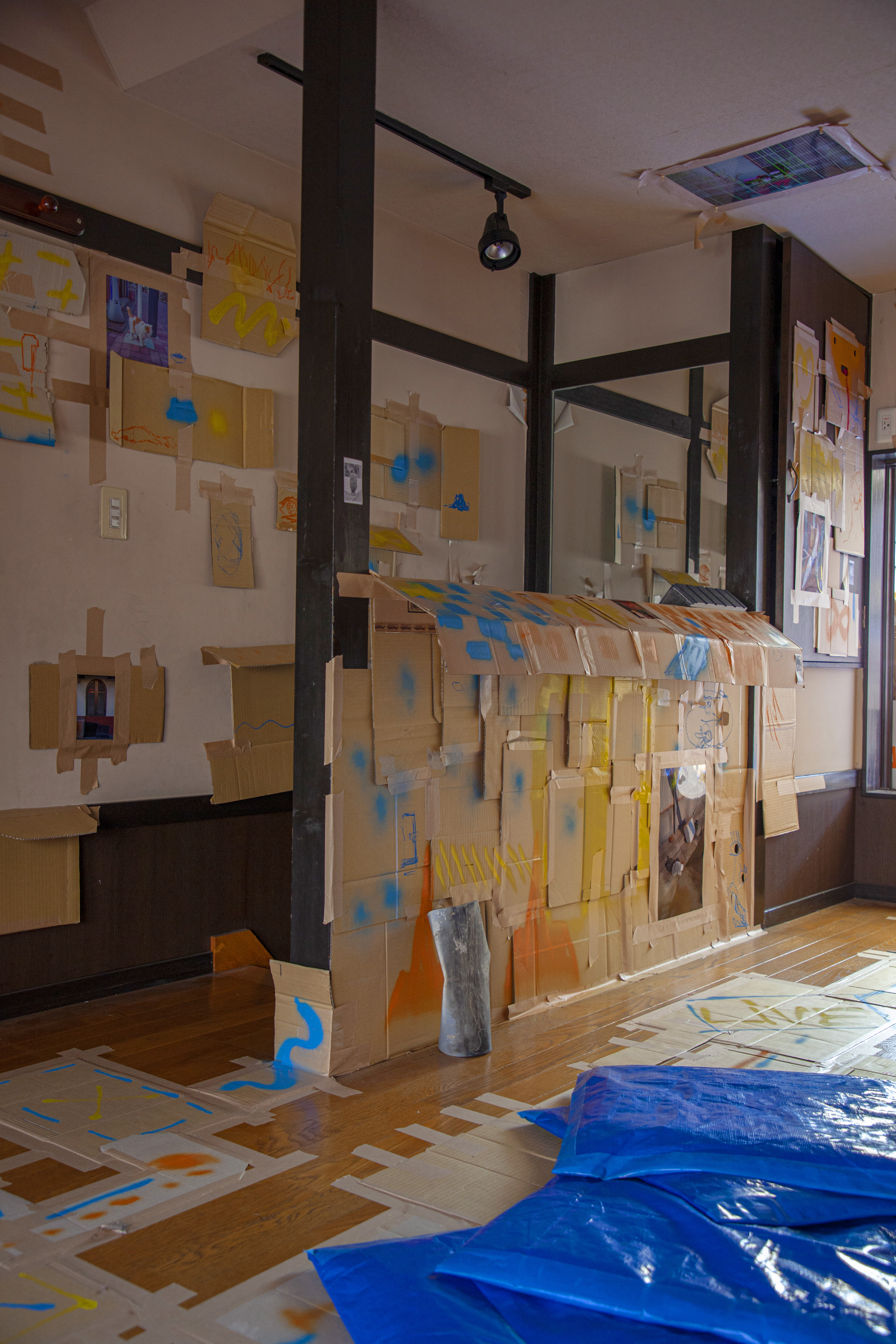




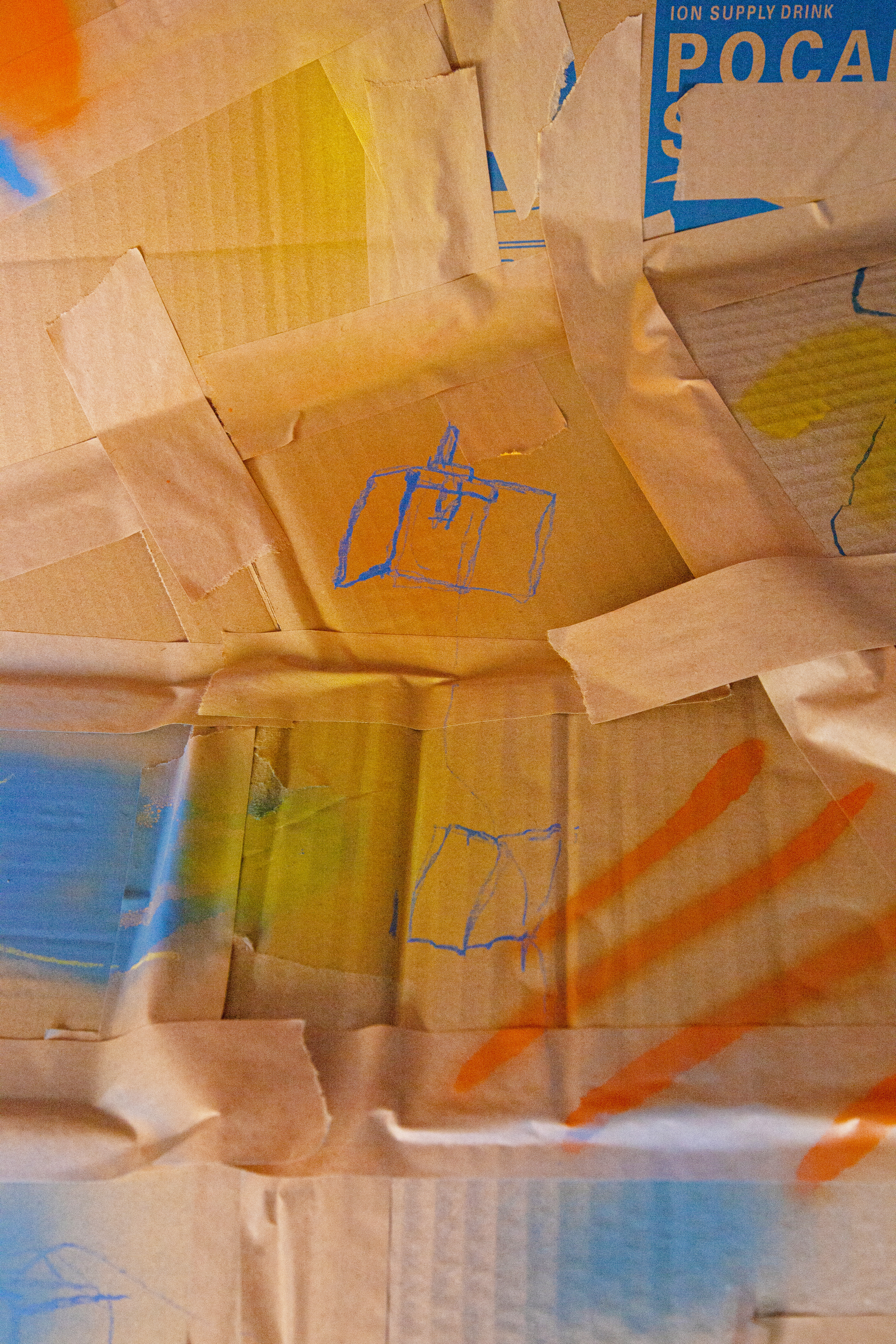












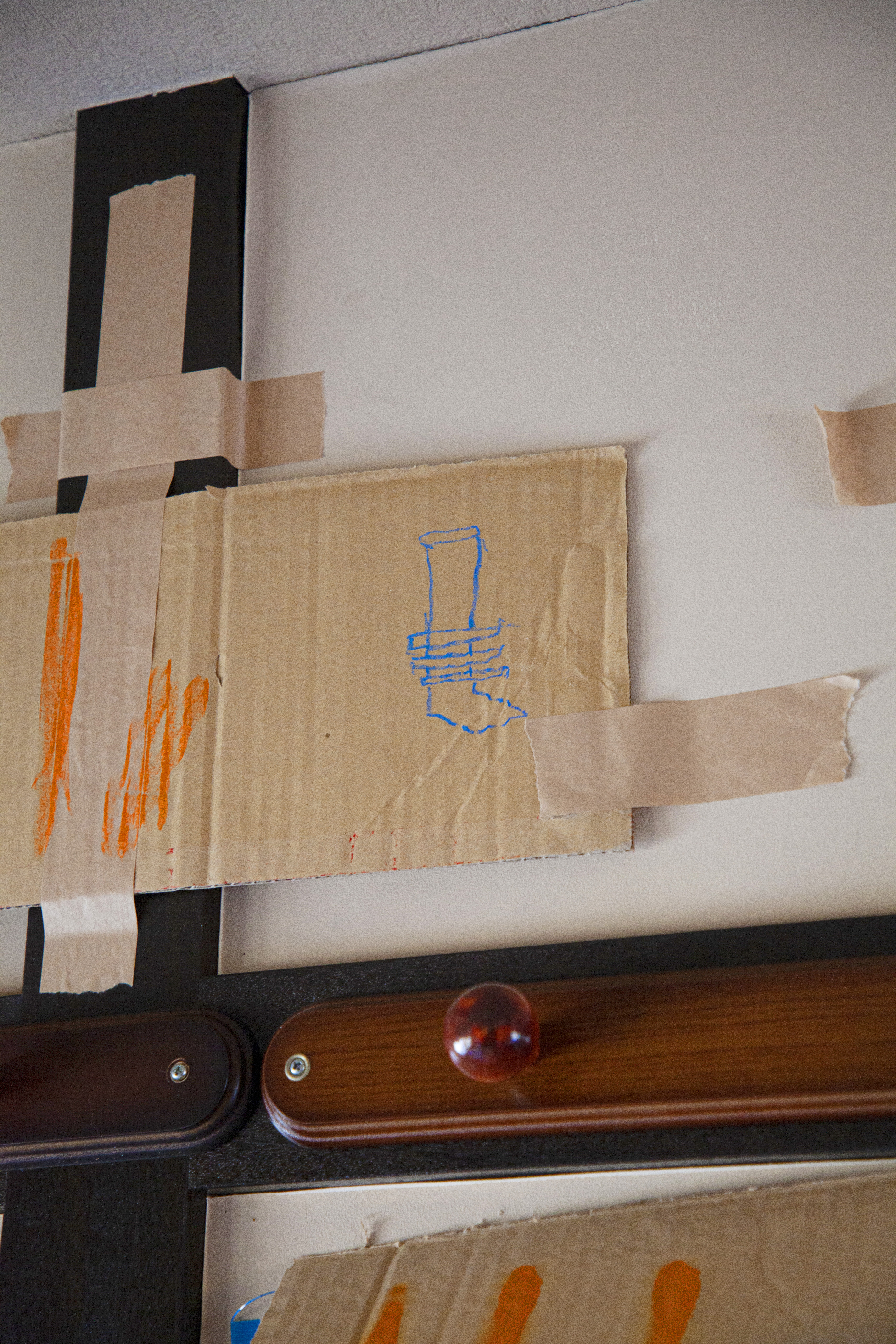








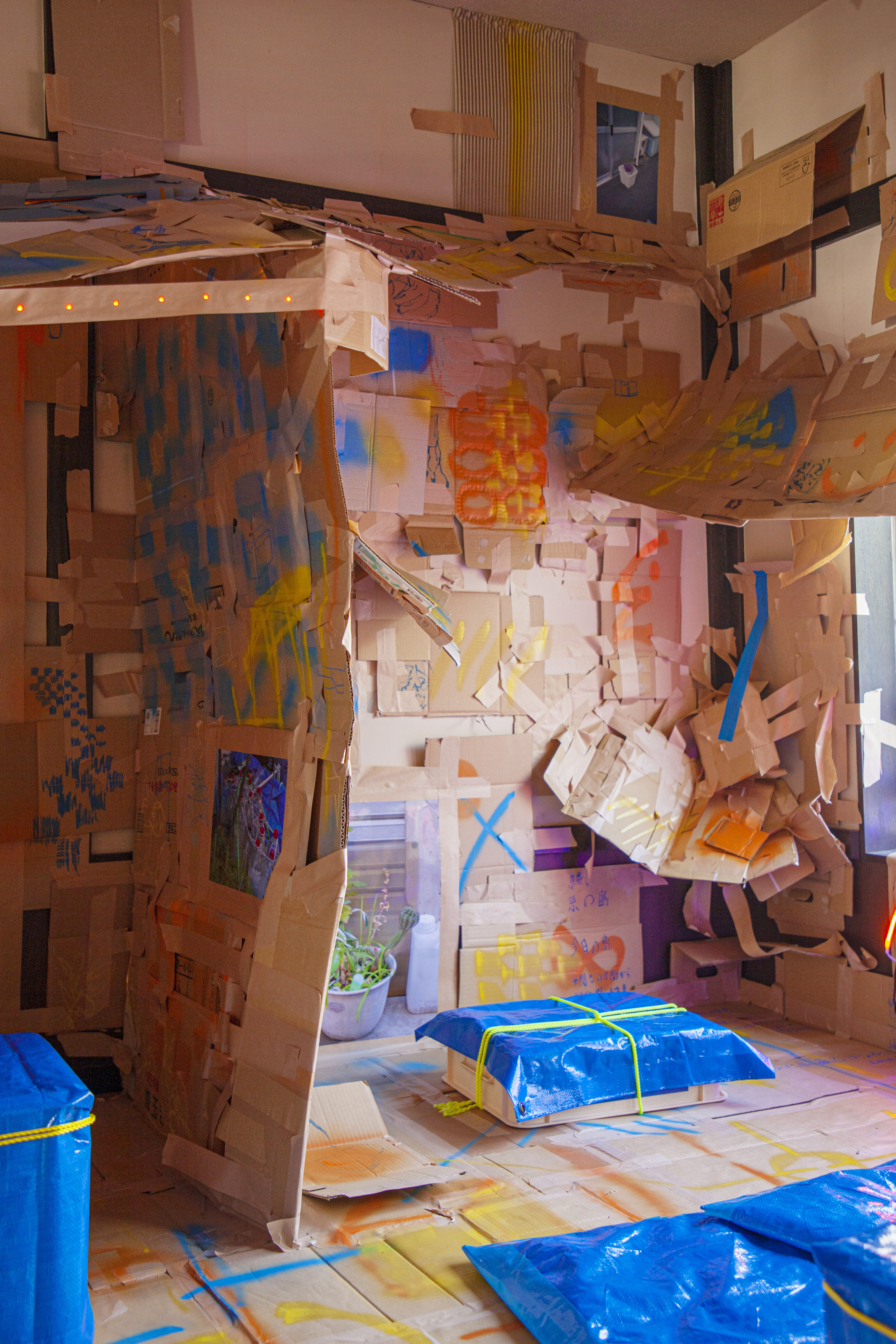













日本語
Disconoma(ファニー・テルノとトマ・ヴォーティエのデュオ)は、**横丁(yokocho)**という空間装置を、展示空間とコミュニティの生活空間の境界に位置するものとして再解釈することを提案します。
墨田向島エキスポ(Sumida Mukojima Expo)の2023年のテーマは、1923年の関東大震災の記憶でした。この震災は東京の都市計画に大きな影響を与え、京島の独特なアイデンティティを形作りました。震災後や火災後に建てられたバラック(バラック建築)と、京島の長屋(nagaya)や横丁(yokocho)には共通点が多く、横丁はこれらのバラック建築の子孫と考えることができます。これらの建築形態は、リサイクル、DIY(自作)、生活空間のパーソナライズを重視しつつも、その空間装置が常に解体・再建のリスクにさらされるという脆弱性も共有しています。同様に、京島の街並みも横丁と似ており、狭く有機的な路地が特有の貴重な社交の場を生み出しています。
Disconomaは、墨田エキスポに招待され、かつて居酒屋「かずのこ(Kazunoko)」が入っていた空き長屋を活用することになりました。そして、彼らは建物を裏返しにするような手法で、内と外を逆転させることを決定しました。つまり、居酒屋が横丁に含まれるのではなく、居酒屋自体が狭い路地を内包し、さらにその中に複数の居酒屋が存在するという、入れ子構造のような空間設計を試みました。これにより、集合的で協力的な場の創出を目指しています。
このLiving Yokochoは、ゴードン・マッタ=クラーク(Gordon Matta-Clark)が1971年から74年にかけて主導した「Food」プロジェクトの系譜に連なり、トマにとっては50年前に彼の叔父が行っていた実践へのオマージュでもあります。同時に、アーティスト・コミュニティの観点から、ソーホー(Soho)と京島を比較し、両地域の共通点を見出す試みでもあります。
Disconomaは、横丁の特徴的な要素(狭く親密な空間、温かみのある照明、混ざり合う香り、生活音)を取り入れつつ、京島の要素(長屋、DIY文化、常に進行中の修復工事、商店街、自然に生い茂る植物)とのハイブリッドな空間を創出します。また、**1923年の震災が生み出した建築形態を参照しながら、視覚的に「災害」の概念を探求し、不安定さと変容をテーマにした美学を展開しています。
空きスペースは、生活空間・展示空間・舞台美術・建築スケールの彫刻として変貌し、多様なイベントを通じて横丁に新たな生命を吹き込む場となります。この空間は、アート愛好者だけでなく、文化的イベントに興味がない人々にも開かれた、無料で誰でも参加できる場所になります。Disconomaは、作品やアーティストの存在を揺るがせ、自由で豊かな可能性を持つ空間と、多様な参加者によって形成される場へとシフトさせています。
Disconomaは、アーティストのアトリエ、居酒屋/横丁、研究拠点、展示空間の要素を融合し、アーティスト、料理人、研究者を招き、レクチャー、ダンスイベント、食の探求、カウンターでの会話を展開する予定です。
EN
The duo Disconoma (Fanny Terno and Thomas Vauthier) proposes to reinterpret the spatial dispositif of the yokocho, situated at the intersection between an exhibition space and a community living space.
For its 2023 edition, Sumida Mukojima Expo chose the theme of remembrance of the devastating 1923 earthquake, which had a profound impact on Tokyo’s urban planning and gave Kyojima its distinctive identity. There are striking similarities between the barracks built after the earthquake and fires, the nagaya of Kyojima, and the yokocho, which can be considered descendants of the post-disaster barrack architecture (バラック建築). These architectural forms share common traits: an emphasis on recycling, do-it-yourself construction, and the personalization of living spaces, but also the precarious nature of these spatial dispositifs, constantly at risk of demolition and replacement by new constructions. Likewise, the Kyojima district resembles a yokocho with its narrow and organic alleyways, fostering a unique and precious form of social interaction: human connections shaped by spatial intimacy.
Invited by Sumida Expo to repurpose a vacant nagaya that once housed the izakaya "Kazunoko", Disconoma decided to turn the building inside out, reversing the relationship between interior and exterior: instead of the izakaya being contained within the yokocho, it now encloses the alleyway, which in turn contains several izakayas—like a system of nesting dolls. This approach embodies their ambition to create a collective and collaborative space.
In this sense, Living Yokocho follows in the footsteps of the collective project "Food" (1971-74) led by Gordon Matta-Clark, and for Thomas, it serves as a tribute to his uncle’s practice from 50 years ago, while drawing a parallel between the artistic and community life of Soho and Kyojima, which share many similarities.
Disconoma’s installation evokes the typical characteristics of yokocho (tight and intimate spaces, dim and colorful lighting, blended aromas, and the vibrant sounds of life) while hybridizing them with elements representative of Kyojima (nagaya, DIY construction, ongoing renovations, shotengai shopping streets, and resilient informal vegetation). While the 1923 disaster led to the emergence of these architectural forms, Disconoma also explores catastrophe visually, through an aesthetic of precarity and metamorphosis.
The vacant space will thus be transformed into a living space, an exhibition area, a scenography, and a sculpture—on the scale of the building itself. The space will also be animated by multiple events, bringing the yokocho to life. The goal is to breathe new life into this abandoned place, as an ode to the unique sociality of narrow-alley architecture, inherited from the 1923 disaster. The result will be an open space for art enthusiasts as well as those with no specific inclination toward cultural events—accessible, free, and welcoming to interventions from both artists and non-artists. In this way, Disconoma dissolves the presence of the artwork and the artist, replacing them respectively with a free and open space full of possibilities and a multitude of participants.
Disconoma thus blends the formats of an artist studio, an izakaya/yokocho, a research base, and an exhibition space. The venue will welcome artists, chefs, and researchers for lectures, dance parties, culinary explorations, and counter conversations.
FR
Le duo Disconoma (Fanny Terno et Thomas Vauthier) propose de revisiter le dispositif spatial du yokocho, à la lisière entre espace d’exposition et espace de vie communautaire.
Sumida Mukojima Expo a choisi comme thème pour son édition 2023 la remémoration du terrible séisme de 1923, qui a eu une profonde influence sur l’urbanisme de Tokyo et donné son identité si particulière à Kyojima. Des similitudes rapprochent les baraques, construites après le séisme et les incendies, et les nagaya de Kyojima et les yokocho, qu’on peut considérer comme les descendant des barraques (バラック建築 post-catastrophe). Ainsi, toutes ces formes d’architecture ont en commun la valorisation du recyclage, du do-it-yourself, de la personnalisation de son espace de vie, mais aussi de la précarité de ces dispositifs spatiaux - toujours soumis au risque d’être démolis et remplacés par de nouvelles constructions. De même, le quartier de Kyojima se rapproche du yokocho de par ses ruelles étroites et organiques, qui permettent le développement d’une sociabilité particulière et précieuse : des liens humains aus
Ayant été invité par Sumida Expo à investir une nagaya vacante, qui a abrité l’izakaya « Kazunoko », le duo Disconoma a décidé de retourner le bâtiment comme un gant, de renverser intérieur et extérieur : l’izakaya n’est plus contenu dans le yokocho mais abrite lui-même la ruelle étroite, qui contient à son tour plusieurs ikayaza. Comme un système d'enchâssement, de poupées russes. Et ce, dans la volonté de créer un lieu collectif et collaboratif.
En ce sens, Living Yokocho se place dans l’héritage du projet collectif Food (1971-74) mené notamment par Gordon Matta-Clark, et constitue pour Thomas une sorte d’hommage de la pratique de son oncle, 50 années plutôt, tout en permettant de dessiner un parallèle entre les deux localités de Soho et de Kyojima, qui partage beaucoup de similitudes en terme de vie artistique et communautaire.
Disconoma propose donc une installation évoquant les caractéristiques typiques du yokocho (espace restreint et intimiste, lumières tamisées et colorées, odeurs métissées, bruits de vie) en les hybridant avec des éléments représentatifs de Kyojima (nagaya, DIY, travaux permanents, shotengai, végétation informelle vivace). Si la catastrophe de 1923 a permis l’apparition de ces formes architecturales, Disconoma explore également plastiquement la catastrophe dans leur installation - dans une esthétique tout en précarité et en métamorphose.
Le local vacant sera ainsi transformé à la fois en lieu de vie, espace d’exposition, scénographie, et en sculpture - à l’échelle du bâtiment. L’espace sera donc également rythmé par de multiples événements venant animer le yokocho. Dans l’objectif de ré-insuffler de la vie dans ce lieu abandonné, comme une ode à la socialité si particulière des architectures aux ruelles étroites, héritées de la catastrophe de 1923. Ainsi sera composé un espace pour amateurs d’art mais aussi pour ceux n’ayant pas d’inclination spécifique pour les événements culturelles, dans une forme accessible et gratuite, ouverte à des interventions d’artistes et non-artistes en son sein. Ainsi, Disconoma fait fluctuer la présence de l’œuvre et de l’artiste - respectivement remplacés par un espace libre et riche de ses possibles, et une multitude de participants.
Disconoma développe ainsi un métissage entre la forme de l’atelier d’artistes, de l’izakaya/yokocho, de la base de recherche et de l’espace d’exposition. Le lieu accueillera artistes, cuisiniers et chercheurs pour des conférences, des soirées dansantes, des découvertes gustatives et des discussions de comptoir.
Exhibition, night time



















Living Yokocho time - Menu

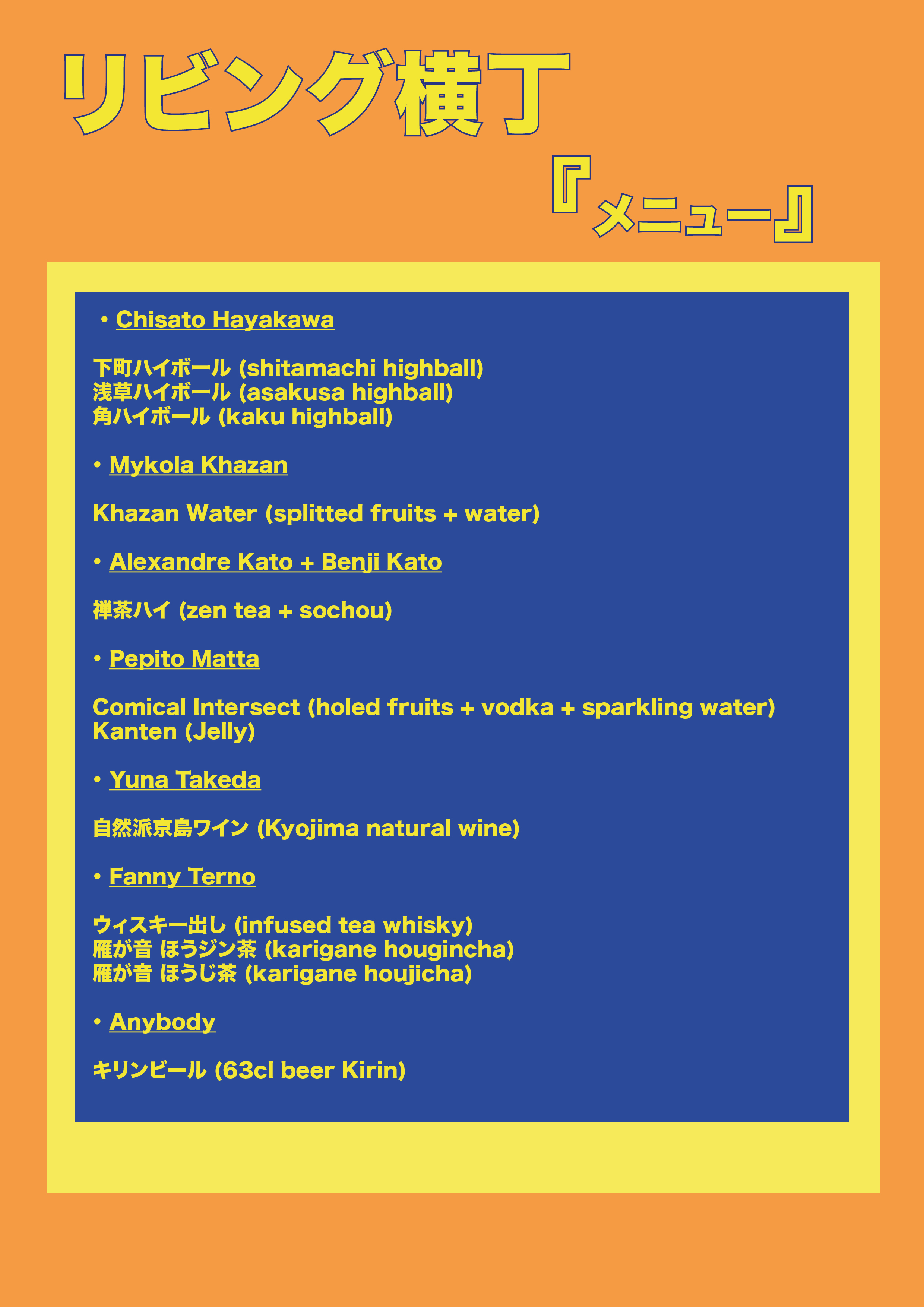

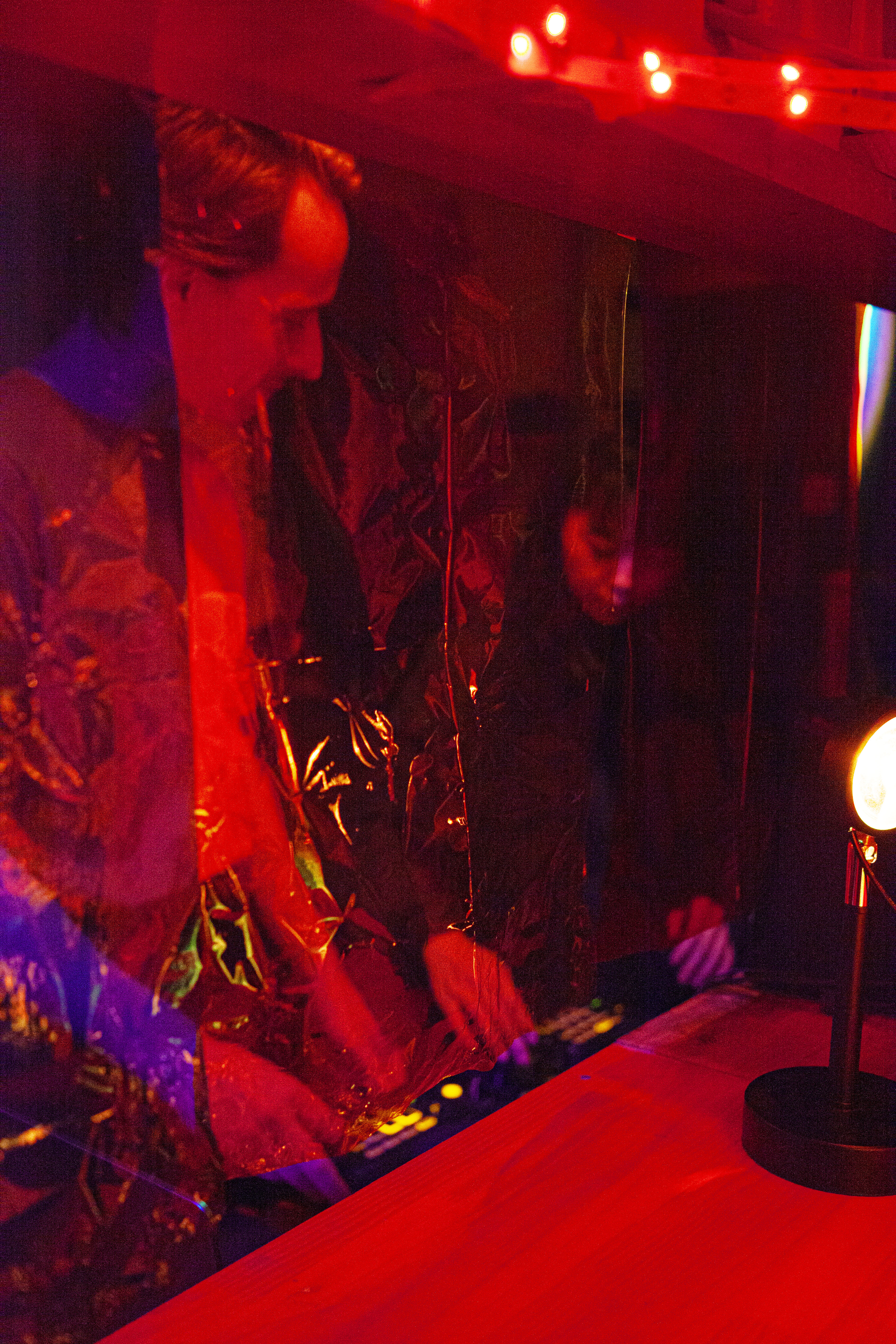









Workshop - to become nagaya





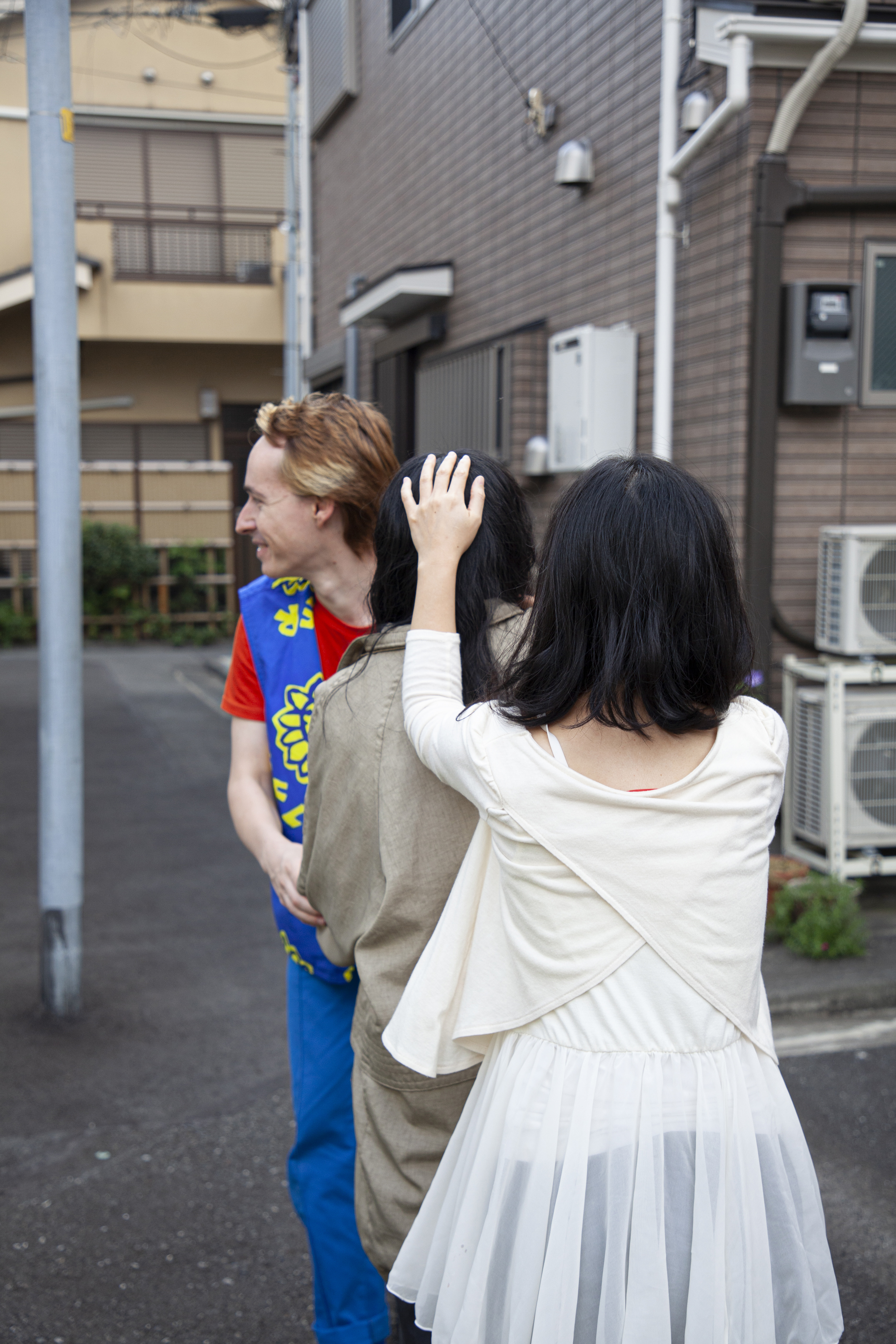



Living Yokocho - About Kyojima and art revitalization : talk behind izakaya bar counter


Living Yokocho - drama realization

